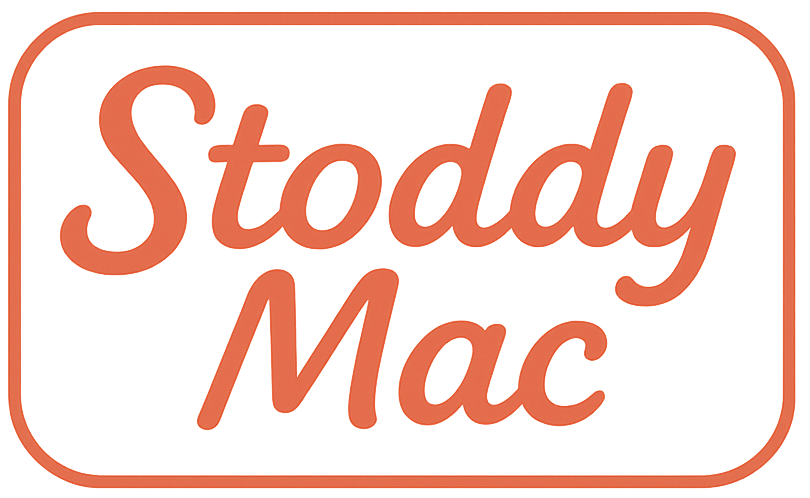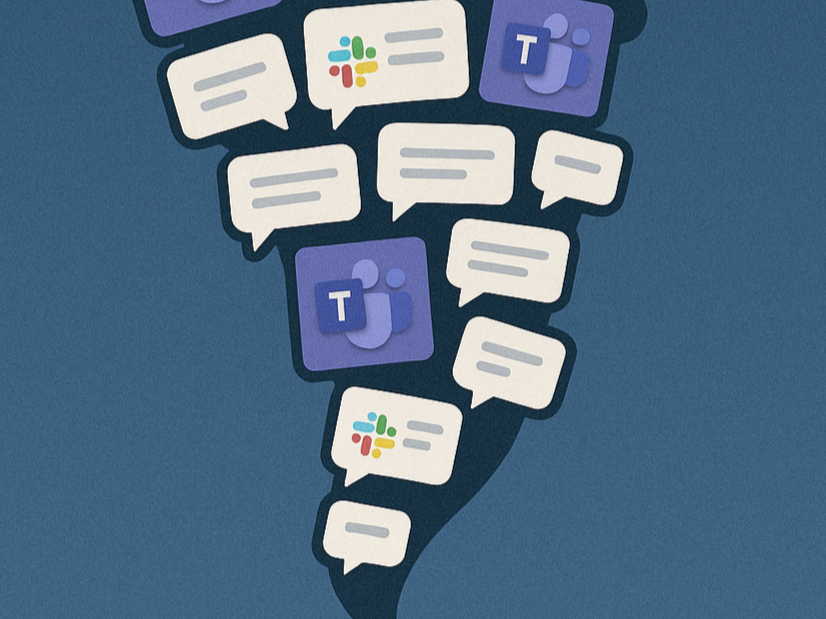Slack Spirals and Teams Tornadoes: How to Rescue Your Team from Tech Overload in 2025
A tornado of inbound messages coming through various chat applications like Slack and Microsoft Teams
If your team’s inbox feels like a black hole and your Slack pings are starting to sound like an incoming storm, you’re not imagining things.
Excess notification noise has become one of the biggest productivity killers of 2025.
Add hybrid work chaos, a flood of AI tools, and the eternal “quick chat” that lasts 40 minutes, and suddenly leading a team feels less like management and more like air-traffic control.
Here’s the good news.
You can’t eliminate the noise, but you can build systems that cut through it, and bring your team’s focus back from the brink.
Stop the Email Quicksand and Calendar Tetris
Most inboxes aren’t communication tools anymore. They’re stress incubators.
Endless CCs, FYIs, and “just looping you in” emails bury the messages that actually matter.
Pair that with back-to-back meetings and you’ve got zero space for clear decision-making.
Instead of trying to “manage” the chaos, shrink the channels.
Set norms around where conversations happen, limit unnecessary recipients, and carve out meeting-free blocks so people can focus.
Your team doesn’t need more tools. It needs better boundaries.
Hybrid Without the Headache
Hybrid work is great in theory… until you’re juggling time zones, in-office days, and whose camera still isn’t working.
Done poorly, it erodes trust. Done well, it gives your team flexibility and clarity.
Skip the “Zoom marathon” approach.
Replace it with a clear shared calendar strategy and asynchronous updates for anything that doesn’t need a real-time meeting.
As Everything DiSC points out, clear, two-way communication is the anchor that keeps hybrid teams aligned when work models keep shifting.
AI: Friend, Foe, or Frenemy?
For some, AI is the new productivity hero.
For others, it’s the suspicious “new boss” no one asked for.
One study found employees need open communication about automation plans and skill-building opportunities to keep fears from spiraling into burnout.
This isn’t just about training on the tech.
It’s about linking AI tools to real team priorities, showing the “why” behind adoption, and letting people help shape how they’ll use it.
Matter calls out that transparent conversations about AI’s role can turn anxiety into energy, and that’s exactly what modern teams need.
Why Louder Leadership Fails in a Distracted World
When things get noisy, some leaders try to out-shout the chaos.
Problem is, more noise doesn’t fix noise.
What works is a communication playbook, a clear, agreed set of rules about how your team shares priorities, makes decisions, and flags urgent issues.
Think of it as team clarity insurance.
Without it, everyone’s interpreting the storm differently. With it, your people know exactly where to look for the signal.
And with 36% of leaders saying aligning the workforce with future business priorities is their top challenge, it’s not just a nice-to-have — it’s survival.
Focus Hygiene: Guarding Deep Work Like It’s Treasure
You can’t get to meaningful work if you’re constantly swiping away notifications like a mosquito swarm.
In 2025, focus time isn’t a luxury, it’s survival.
That means blocking “deep work” windows on the calendar, muting non-critical channels, and protecting those blocks like they’re client meetings.
This isn’t just about productivity.
It’s about restoring mental space so your team can think clearly and create work they’re proud of.
If your team’s communication feels like a tornado, it’s time to grab the map, not just the mop.
Clarity, boundaries, and smart tool use will calm the storm faster than another “quick sync” ever will.
If this helped cut through the chaos, join other leaders getting weekly insights from The Signal.

